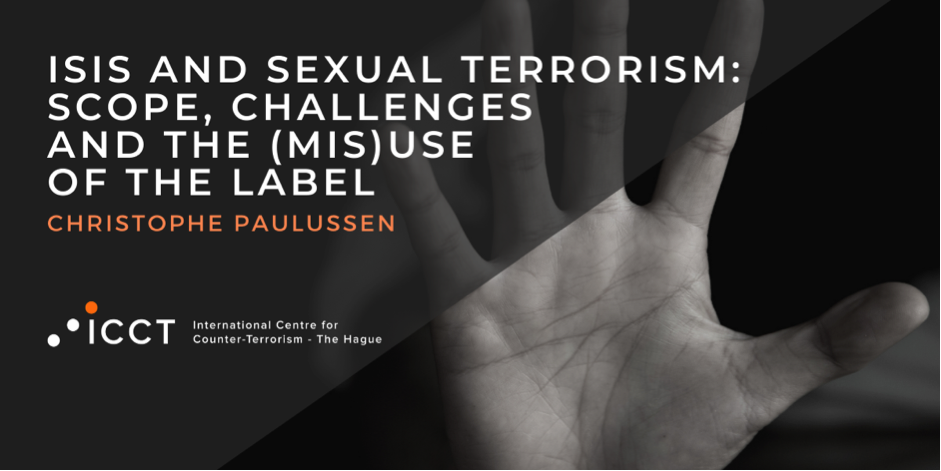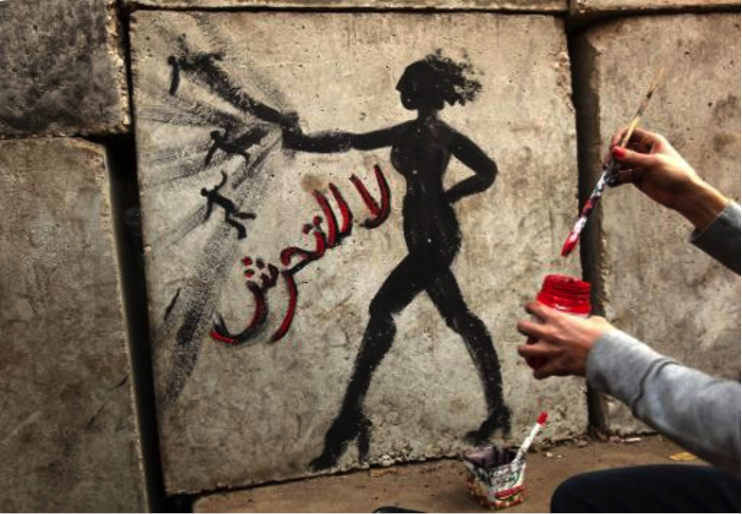
“Rape has been used throughout history as a weapon of war. I never thought I would have something in common with women in Rwanda – before all this, I didn’t know that a country called Rwanda existed – and now I am linked to them in the worst possible way, as a victim of a war crime that is so hard to talk about that no one in the world was prosecuted for committing it until just 16 years before Isis came to Sinjar” (Murad in Paulussen, 2021).
The above words from the 2018 Nobel Peace Prize winner Nadia Murad exemplify the use of sexual violence in and during the conflict and its potential in devastating people’s life. In the latest report “ISIS and Sexual Terrorism: Scope, Challenges and the (Mis)Use of the Label” on 27 Jan 2021 by Dr. Christophe Paulussen draws on how Conflict-Related Sexual Violence is used to commit sexual terrorism. Sexual terrorism as discussed in the article is used as a tactic by terrorist organizations like Al-Shabaab and Boko Haram to subjugate women and perpetuate physical/sexual violence. UN Security Council Resolution 2331 mentioned its rampant use by stating that
“acts of sexual and gender-based violence, including when associated to human trafficking, are known to be part of the strategic objectives and ideology of certain terrorist groups, used as a tactic of terrorism and an instrument to increase their finances and their power through recruitment and the destruction of communities” (Paulussen, 2021) .

A file picture taken on December 14, 2012, shows an Egyptian activist drawing
graffiti depicting a woman and reading in Arabic:
"No to Sexual Harassement" on a wall outside the presidential palace in Cairo.
By Patrick Baz (AFP/File)
A vivid example of sexual terrorism can be seen in the activities of ISIS which includes sexual enslavement, sex slaves in the market and mass rapes. According to Ahram
“[p]assing abducted women from man to man [also] demonstrate[d] the abject humiliation of a conquered community” – and was justified by ISIS “as permissible conduct towards non-believers who refuse to accede to Islam.” (Ahram in Paulussen, 2021) From this, it can be well stated that sexual terrorism is an organised and institutionalised crime. Its use as Paulussen states in the article is to further the fundamentalist ideology, recruit young men and to also financially support the organisation.
One important challenge that legislative and international committee face is its indeterminacy during legal trials. The persecution is predominantly not done on the basis of sexual terrorism but only terrorism. The US Trafficking in Human Beings Report 2019 noted that in Syria and Iraq, some, but not many, human traffickers have been convicted, albeit neither clearly members of ISIS, nor explicitly linked to sexual violence. In his latest report on Conflict Related Sexual Violence of June 2020, the UN Secretary-General stated in the case of Iraq that “there are still no indictments for sexual violence committed by ISIS.” The members of ISIS is therefore only convicted for terrorist offences Indeed, members of ISIS are usually only convicted for terrorism offences and not for other offences like rape and sexual-based violence. Due to this, legislative changes have been made to “explicitly categorise Conflict Related Sexual Violence and human trafficking as a form of terrorism”. The acknowledgement of sexual terrorism will be able to do justice to victims and will also condemn the use of sexual violence during the conflict. There will also be more lines of support for victims of sexual terrorism and justice will be made accessible to them.
In the concluding part, the article raises an important question regarding the applicability of laws related to sexual terrorism and their implementation by the nation-states. The following solutions were offered to strengthen the process:
- Training experts on recognising the different forms of criminality and their correlation.
- Encouraging interdepartmental cooperation between counter-terrorism specialists, officers fighting human trafficking and sexual violence.
- Special training sessions on gender sensitivity for the removal of victim stigma.
- Constant discussion around sexual terrorism and about the nexus between terrorism, Conflict Related Sexual Violence and human trafficking with victims, policymakers and scholars alike.
- National technical assistance, including ensuring that national legislation is in conformity with international law.

References
Cohen, Richard (1979) `Hello, Down There, It’s Just Us Hard Hats’, Washington Post 6 May: B-1.
Dana, Carol (1986) `Talking Back to Street Harassers’, Washington Post 19 August: C-5.
Davies, Miranda , Longrigg, L. , Montefiore, L. and Jansz, N. (1986) Half the Earth: Women’s Experiences of Travel Worldwide. London: Pandora.
Donahue transcript (1990) No. 3042: `Women Turn the Tables on Male Catcallers’. New York: Journal Graphics.
Sheffield, Carole J. (1987) `Sexual Terrorism: The Social Control of Women’, in B. Hess and M.M. Ferree (eds) Analyzing Gender: A Handbook of Social Science Research. Newbury Park: Sage.
Spender, Dale (1985) Man Made Language, 2nd edn. London: Routledge and Kegan Paul.
Stanko, Elizabeth A. (1985) Intimate Intrusions: Women’s Experience of Male Violence. London: Routled